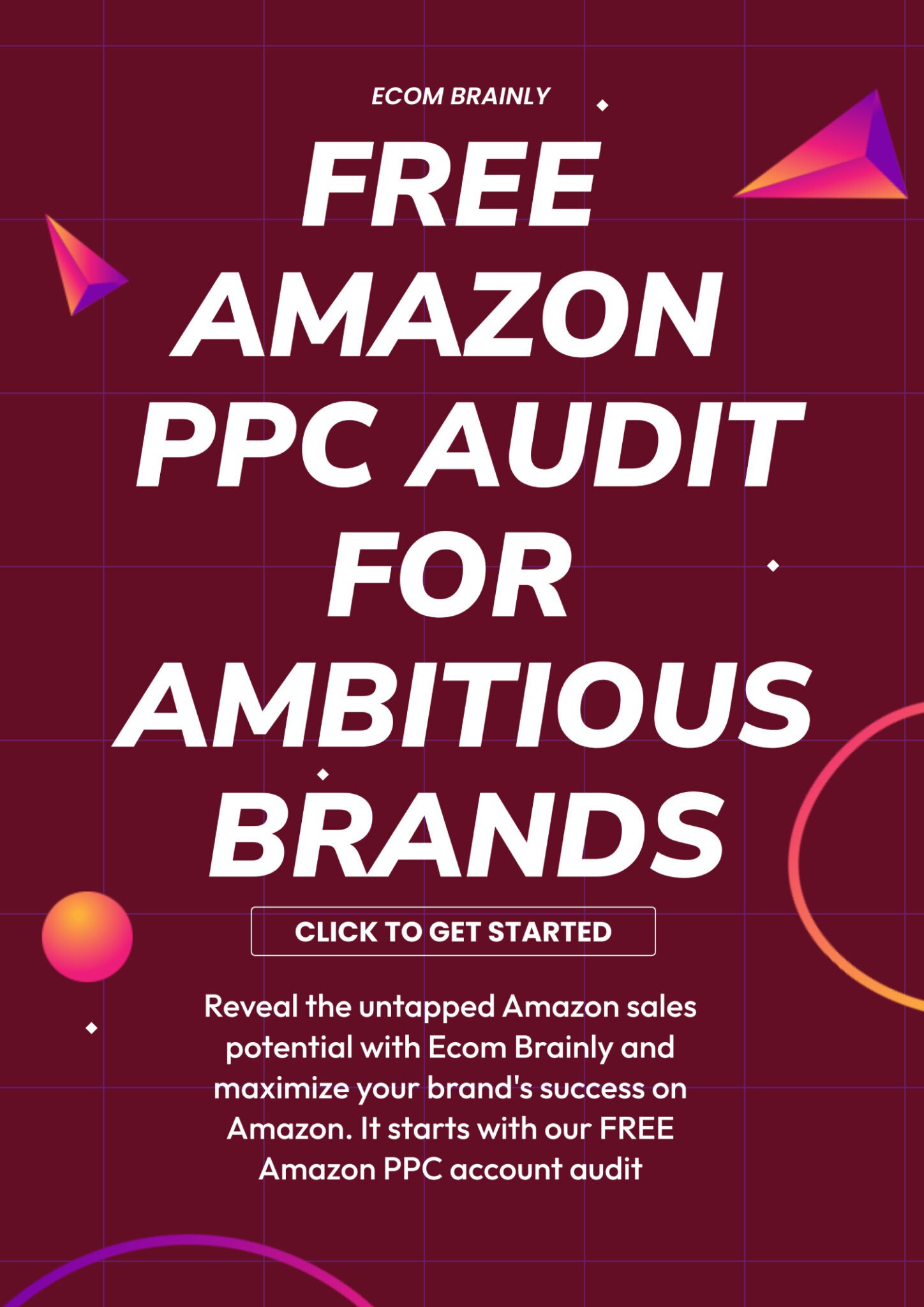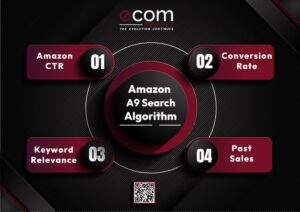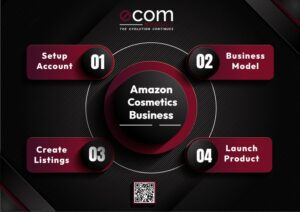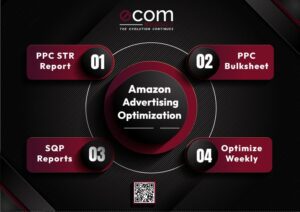
Have a great time reading this blog.
Ready to see how our team can grow your Amazon brand? Click Here
.box {
position: relative;
padding: 15px;
font-size: 16px;
color: #62668A;
background-color: rgba(255, 100, 100, 0.05);
}
.box::before {
content: "";
position: absolute;
top: 0;
left: 0;
width: 100%;
height: 100%;
background-color: rgba(100, 15, 37, 0.05);
z-index: -1;
}
.text {
font-size: inherit;
}
.first-sentence {
font-size: 16px;
font-weight: bold;
}
.second-sentence {
font-size: 14px;
}
.text .link {
text-decoration: none;
color: #640F25;
font-size: 14px;
font-weight: 500;
}
/* Responsive font size for mobile devices */
@media (max-width: 767px) {
.box {
font-size: 15px; /* Reduce font size by 1 point for mobile */
}
.first-sentence {
font-size: 15px;
}
.second-sentence {
font-size: 13px;
}
.text .link {
font-size: 13px;
}
}
Have a great time reading this blog.
Ready to see how our team can grow your Amazon brand? Click Here
Amazon PPC Campaign Structure (2024): A Comprehensive Guide
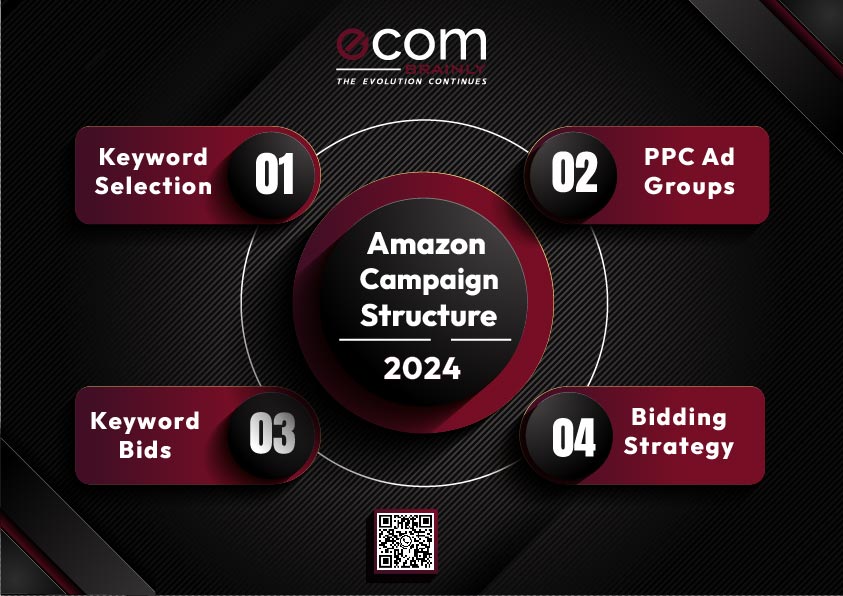
What is Amazon PPC
Amazon PPC (Pay-Per-Click) stands as a pivotal component for sellers aiming to thrive on the Amazon platform. This powerful advertising model is not just a tool; it’s a gateway to heightened visibility and enhanced sales opportunities in the vast Amazon marketplace.
At its core, Amazon PPC campaign structure is about structuring and placing your products in the spotlight, right where potential customers are most likely to notice them.
Well-Structured Amazon PPC Campaign Matters
The architecture of an Amazon PPC campaign is much more than a mere setup of ads. It’s about crafting a strategy that resonates with your target audience, aligns with your marketing goals, and adapts to the ever-evolving Amazon algorithms.
A well-structured Amazon PPC campaign strategy is akin to building a bridge between your products and the customers who are actively seeking them. It’s not just about being seen; it’s about being seen by the right eyes at the right time.
In the following sections, we’ll dive into the nuances of setting up Amazon PPC, unravel the complexities of Amazon PPC automatic campaign and manual campaigns, and explore the art of optimizing Amazon PPC for maximum impact.
Whether you’re new to Amazon PPC campaign management or looking to refine your existing strategies, this guide is designed to provide you with actionable insights and practical tips to improve your Amazon advertising game.
Understanding Amazon PPC Campaigns
I. A Seller's Advertising Tool
Amazon PPC is a robust advertising model designed for sellers on Amazon’s platform. It’s a system where advertisers pay a fee each time a potential customer clicks on their ads.
This model is integral to Amazon PPC campaign management, allowing sellers to gain prominence in Amazon’s search results and product pages, thereby increasing the visibility of their products.
II. Diverse Campaigns for Diverse Goals
When it comes to Amazon PPC campaigns, diversity is key. There are primarily three types: Sponsored Products, Sponsored Brands, and Sponsored Display ads. Each type serves a unique purpose:
- Sponsored Products are ideal for promoting individual listings and appear within search results and on product detail pages.
- Sponsored Brands showcase a collection of products and include a custom headline and logo, appearing in search results.
- Sponsored Display ads target customers based on their shopping behaviors and interests, appearing on Amazon and external websites.

III. Influence within Amazon's Algorithm
The role of Amazon PPC in Amazon’s algorithm is significant. It not only enhances product visibility but also contributes to organic ranking over time.
Products that perform well in PPC campaigns often see improved organic search rankings, creating a virtuous cycle of visibility and sales.
IV. Automatic vs. Manual Campaigns
Amazon PPC automatic campaigns are all about ease and automation. In these campaigns, Amazon uses its algorithm to target your ads based on keywords and products similar to yours.
Pros:
- Time-saving, as it requires minimal setup.
- Great for discovering new, relevant keywords.
Cons:
- Less control over which keywords and placements are used.
- May lead to irrelevant traffic if not monitored properly.
Best Practices:
- Use automatic campaigns to uncover valuable keywords that can be used in manual campaigns.
- Regularly review the search term report to refine and optimize the campaign.
Manual Campaigns
In contrast, manual campaigns in Amazon PPC offer more control. Advertisers select their own keywords, set bid amounts, and choose match types.
Pros:
- Greater control over targeting specific keywords.
- Ability to adjust bids based on keyword performance.
Cons:
- Requires more time and effort to manage.
- Needs ongoing optimization based on performance data.
Best Practices:
- Conduct thorough keyword research to identify high-potential keywords.
- Continuously monitor and adjust bids for optimal performance and budget efficiency.
Building a Strong Campaign Structure
The cornerstone of a successful Amazon PPC campaign lies in its structure. A well-organized campaign structure not only enhances the effectiveness of your ads but also maximizes your return on investment. Understanding and implementing key elements are crucial in Amazon PPC campaign management.
I. Key Elements of an Effective Amazon PPC Campaign Structure
- Clear Campaign Goals: Define what you want to achieve – whether it’s brand awareness, product launch, or boosting sales for specific products.
- Organized Campaign and Ad Group Structure: Structure your campaigns and ad groups logically based on product categories, goals, or target audience.
- Keyword Selection: Choose keywords that are highly relevant to your products and audience.
- Optimized Bidding Strategy: Set bids based on keyword competition, relevance, and campaign goals.
- Continuous Monitoring and Optimization: Regularly review campaign performance to make necessary adjustments.
II. Step-by-Step Guide to Amazon PPC Campaign Structure
I. Campaign Name and Goal
Start by outlining what you want to achieve with your Amazon PPC campaign. This could range from boosting sales for a specific product line to increasing overall brand awareness.
For instance, if your goal is to enhance the ranking of your product for a particular keyword, you should strategically name your campaign to reflect this objective. A recommended naming convention could be: “SP | [Product ASIN] | [Keyword Source] | [Date] | [Match Type] | [Purpose]”. This structured approach not only clarifies the campaign’s focus but also aids in efficient tracking and management.
II. One Ad Group Per Campaign
For optimal Amazon PPC campaign performance, adhere to the “One Ad Group Per Campaign” rule.
Let’s take the example of targeting a specific keyword with three different match types: Exact, Broad, and Phrase. Instead of lumping all these match types together in a single ad group, it is recommended to create three distinct campaigns, each with its own dedicated ad group for the respective match type.
Here’s why this approach is beneficial:
- Enhanced Control: By segregating match types into separate campaigns, you gain better control over your bidding strategies, budgets, and campaign settings. This allows you to tailor your approach to the specific performance characteristics of each match type.
- Precise Optimization: Isolating match types makes it easier to optimize your campaigns. You can adjust bids, and negative keywords for each match type to improve ad relevance and click-through rates.
- Clear Performance Insights: With individual campaigns and ad groups, you can clearly monitor the performance of each match type. This visibility helps you identify which match type is generating the best results and where adjustments are needed.
- Budget Allocation: Separate campaigns provide the flexibility to allocate your budget according to your priorities. You can allocate more budget to the match types that perform well and adjust accordingly based on real-time data.
III. Keywords Per Campaign
When structuring an Amazon PPC campaign, a focused approach to keyword selection is crucial. Ideally, incorporating 5 to 10 keywords per campaign strikes the perfect balance, ensuring each keyword receives adequate attention and budget allocation. This range allows for comprehensive coverage without diluting the campaign’s focus.
For campaigns targeting specific keyword rankings, consider establishing a single keyword campaign. This focused strategy enhances control, performance, and the ability to conduct detailed data analysis for each individual keyword. It provides a clear picture of how a particular keyword performs, allowing for more precise optimization and adjustments.
In multi-keyword campaigns, grouping keywords with similar search volumes is a strategic move. For instance, you could create one campaign featuring 5 keywords, each with a search volume ranging between 4000-5000.
Similarly, another campaign could be dedicated to keywords within the 2000-3000 search volume bracket. This method ensures that your keywords compete on a level playing field, leading to more accurate performance data and efficient budget use.
III. Setting Up Keyword Bid
Effective bid management is a key component in Amazon PPC campaign strategy. When determining your keyword bid amount, a nuanced approach can yield significant benefits.
For those seeking rapid data acquisition and insights, consider setting your bid slightly above the recommended highest bid range for a specific keyword. This strategy can accelerate data collection, providing quicker insights into keyword performance and market dynamics.
Alternatively, if your focus is on cost-efficiency and longer-term data accumulation, setting your bid closer to Amazon’s recommended bid can be advantageous. This approach balances visibility with budget conservation, allowing for sustained campaign performance analysis over time
IV. Choosing the Right Campaign Bidding Strategy
Selecting an appropriate bidding strategy is crucial in Amazon PPC campaign management. Amazon offers three primary bidding strategies, each suited to different campaign goals:
- Dynamic Bids – Up and Down: Ideal for rapid data collection and aggressive market penetration. This option may lead to higher spending, so it’s best used when budget constraints are minimal.
- Dynamic Bids – Down Only: A more conservative approach, suitable for most campaigns. It helps control spending while still maintaining competitive ad placements. Opt for this strategy for general campaign use.
Fixed Bids: This strategy gives you full control over your bid amounts, without Amazon’s automatic adjustments. It’s best utilized when aiming for consistent ad placements and sales velocity, particularly for ranking on specific keywords. Use this approach when you prefer a steady and predictable ad spend, ensuring that your ads maintain a consistent presence without the variability introduced by Amazon’s dynamic adjustments.
V. Auto vs Manual Campaigns
Incorporating both auto and manual campaigns is essential for a well-rounded Amazon PPC campaign strategy.
Auto campaigns serve as valuable research campaigns, uncovering profitable keywords and ASINs that might otherwise be overlooked. They play a crucial role in identifying new opportunities for growth and optimization.
Regular analysis of the search term report from your auto campaigns is key. This allows you to transfer high-performing keywords into manual campaigns for more precise control and optimization.
While exact match campaigns are often prioritized for product ranking, don’t underestimate the power of broad and phrase match campaigns. These types not only contribute to sales but also aid in discovering new, profitable search terms.
A balanced approach, focusing primarily on exact match campaigns while also leveraging broad and phrase matches, ensures both sales growth and continuous keyword discovery for your Amazon PPC campaigns.
VI. Long-Tail Keywords
Long-tail keywords are longer, more specific phrases that are often less competitive and more targeted. They play a crucial role in optimizing Amazon PPC campaigns.
- Enhanced Conversion Rates: Users searching with long-tail keywords typically have a more defined intent, leading to higher conversion rates as they are closer to making a purchase decision.
- Cost-Effective Strategy: Due to lower competition, long-tail keywords can be more cost-effective, offering a better return on investment. They are particularly beneficial for sellers with limited budgets who still want to make a significant impact.
Campaign Budgeting Strategies
Effective budgeting and bidding are critical in Amazon PPC campaign management. This section will guide you through the process of allocating your budget wisely that maximize your campaign’s potential.
- Determine Your Overall Budget: Start by setting a realistic overall budget for your Amazon PPC campaign based on your business size, product margins, and marketing goals. This will be the foundation for all subsequent budgeting decisions.
- Allocate Budget Based on Campaign Goals: Different campaigns may have different objectives, such as brand awareness or driving sales for a specific product. Allocate your budget in a way that prioritizes campaigns according to their importance and potential ROI.
- Consider Seasonal Fluctuations: Adjust your budget to account for seasonal trends in your industry. Increase your budget during peak seasons to capitalize on higher traffic and reduce it during slower periods.
- Use Performance Data to Guide Budget Adjustments: Regularly review your campaign performance. If a campaign is performing well, consider reallocating more budget towards it. Conversely, reduce the budget on underperforming campaigns.

Advanced Campaign Structuring Techniques
Advanced structuring techniques in Amazon PPC campaign management involve a deeper understanding of Amazon’s advertising ecosystem and a strategic approach to leveraging its features. This section explores how to refine your campaign structure for enhanced performance and efficiency.
I. Single Product and Multiple Product Strategies
- Single Product Campaigns: Focus on individual products with unique characteristics or high-profit margins. Tailor your keywords, ad copy, and bidding strategy specifically to each product. This approach allows for precise targeting and optimization.
- Multiple Product Campaigns: Ideal for products that share common features or target similar customer segments. Grouping related products under one campaign can streamline management and provide valuable insights into the performance of product categories.
- Product with Multiple Variations: If your product has multiple variations then advertise the best selling variation. If you are advertising for the first time then better to include all the variations and then at later stage exclude least selling variation from the campaign.
II. Utilizing ASIN Targeting for Precision
- ASIN Targeting in Manual Campaigns: Use ASIN targeting to place your ads on the pages of specific products. This technique is particularly effective for targeting competitors’ products or complementary goods.
- Strategies for Selecting ASINs: Choose ASINs based on their relevance to your product, their performance (high-traffic, best-selling products), and customer overlap. Regularly review and update your ASIN targets to align with market changes and performance data.
III. The Role of Negative Keywords
- Importance of Negative Keywords: Negative keywords prevent your ads from showing up for irrelevant searches, reducing wasted ad spend and improving campaign efficiency.
- Implementing Negative Keywords: Analyze search term reports to identify irrelevant or underperforming terms. Add these as negative keywords to refine your targeting and direct your budget towards more profitable searches.
IV. Campaign Optimization
- Regular Campaign Audits: Periodically review your campaigns to identify areas for improvement. Look for trends in performance data to inform your optimization strategies.
- Optimizing for Amazon’s A9 Algorithm: Understand the factors that Amazon’s search algorithm prioritizes, such as relevance and customer satisfaction. Tailor your campaigns to align with these factors for better ad placement and performance.
- Leveraging Amazon PPC Optimization Tools: Utilize Amazon’s built-in tools like Amazon Search Query Performance Report (SQP( and third-party software to gain deeper insights into your campaign performance and automate optimization processes.
V. Optimizing Ad Placement and Scheduling
- Strategic Ad Placement: Determine the most effective placements for your ads, whether it’s on top of the search (TOS), rest of the search (ROS) or product pages (PP) within Amazon’s extended network. Adjust your bids based on the performance of each placement.
- Ad Scheduling for Maximum Impact: Analyze when your target audience is most active on Amazon. Schedule your ads to run during these peak times to increase visibility and engagement.
3. Common Pitfalls and How to Avoid Them
Even the most experienced advertisers can encounter challenges in Amazon PPC campaign management. This section highlights common pitfalls in Amazon PPC campaigns and provides strategies to avoid them, ensuring your campaigns remain effective and efficient.
I. Ignoring Negative Keywords
- Consequences: Without proper use of negative keywords, your ads may appear for irrelevant searches, leading to wasted ad spend and poor campaign performance.
- Solution: Regularly review search term reports to identify irrelevant terms. Add these as negative keywords to refine your targeting and improve the relevance of your ad placements.
II. Overlooking Campaign Adjustments
- Consequences: Failing to adjust campaigns based on performance data can result in missed opportunities and inefficient use of your budget.
- Solution: Continuously monitor your campaign metrics. Make data-driven adjustments to bids, keywords, and ad content based on performance trends and insights.
III. Neglecting Bid Optimization
- Consequences: Setting bids too high can quickly deplete your budget, while too low bids may result in insufficient ad exposure.
- Solution: Use Amazon’s bid suggestions as a starting point and adjust based on keyword performance and campaign objectives. Consider using dynamic bidding strategies for real-time bid optimization.
IV. Over-reliance on Automatic Campaigns
- Consequences: Excessive dependence on Amazon PPC automatic campaigns can lead to less control over your ad targeting and budget allocation.
- Solution: Balance the use of automatic and manual campaigns. Utilize automatic campaigns for keyword discovery and manual campaigns for precise targeting and optimization.
V. Disregarding Campaign Structure
- Consequences: A poorly structured campaign can lead to disorganization, making it difficult to analyze and optimize performance.
- Solution: Structure your campaigns logically based on product categories, goals, or target audiences. Maintain a clear hierarchy and organization for easy management and analysis.
Measuring and Analyzing Campaign Performance
In Amazon PPC campaign management, measuring and analyzing campaign performance is crucial for understanding the effectiveness of your advertising efforts and making informed decisions. This section explores key metrics and analytical practices to optimize your Amazon PPC campaigns.
I. Key Performance Indicators (KPIs) to Monitor
Click-Through Rate (CTR): This metric measures the percentage of clicks your ads receive relative to the number of impressions. A higher CTR indicates that your ads are relevant and engaging to your target audience.
Conversion Rate: Tracks the percentage of ad clicks that result in a sale. This metric is essential for assessing the effectiveness of your ad in driving purchases.
Advertising Cost of Sale (ACoS): Represents the ratio of ad spend to targeted sales. ACoS is a crucial metric for understanding the profitability of your Amazon PPC campaign.
Return on Ad Spend (ROAS): Calculates the revenue generated for every dollar spent on advertising. ROAS is a direct indicator of the financial effectiveness of your campaigns.
Total Ad Spend: Monitors the overall expenditure on your campaigns, aiding in budget management and ensuring cost-effectiveness.
Total Advertising Cost of Sales (TACoS): Measures the ratio of total ad spend to overall sales revenue. TACoS provides a broader view of how advertising contributes to the overall health of your business, beyond immediate campaign profitability.
II. Learning from Data to Drive Future Strategies
Identify Successful Strategies: Look for patterns in your data that indicate successful strategies. Replicate these strategies in future campaigns to replicate success.
Understand Customer Behavior: Analyze data to gain insights into customer preferences and behavior. Use this information to tailor your campaigns more effectively to your target audience.
Stay Agile and Adapt: The digital marketplace is constantly evolving. Use your data analysis to stay agile and quickly adapt your Amazon PPC campaign strategy to new trends and changes in consumer behavior.
Measuring and analyzing campaign performance is a continuous and integral process in Amazon PPC campaign management.
By focusing on key metrics, regularly analyzing performance data, and making informed, data-driven decisions, you can significantly enhance the effectiveness and efficiency of your Amazon PPC campaigns.
Amazon PPC Success with Ecom Brainly
Amazon PPC can be complex, but you don’t have to do it alone. Ecom Brainly specializes in turning PPC challenges into opportunities for growth and success. Our team of experts is ready to tailor a PPC strategy that fits your unique business needs and goals.
Looking to enhance your campaign performance or kickstart your journey on Amazon with a bang? Ecom Brainly is your go-to partner. We leverage cutting-edge techniques and data-driven insights to ensure your products get the spotlight they deserve.
Reach out to us today, and let’s propel your Amazon business to new heights. Your journey towards increased sales and market dominance starts here with Ecom Brainly!
Share This Article

About Ecom Brainly
Ecom Brainly – A Full-Service Amazon agency that focuses on Sustainable Growth and Profitability for Our Partners (clients).
We been selling on Amazon since 2017 and has had to adapt for every change that Amazon has made along the way. Amazon is an ever changing marketplace and Ecom Brainly has his team ready to handle any and every challenge.
Is your brand having challenges with growth, profitability, advertising, reporting etc – If yes, please contact us today!
